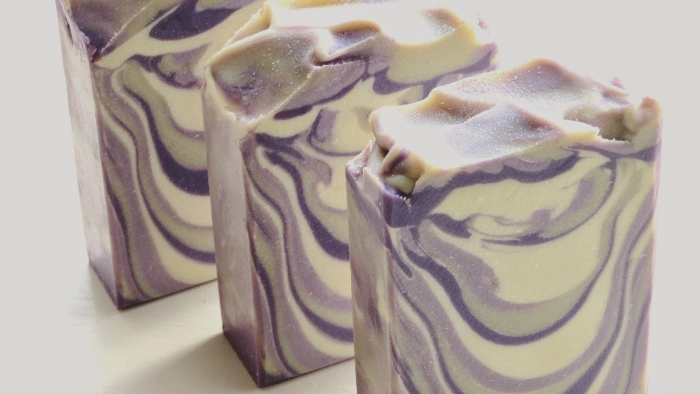
27 Aug Cold Soap: The Right Way to Cleanse
Cleansing soaps, as we know them today, date back to ancient Babylon (2800 B.C.E.), whose citizens were the first to master the art of soap making, combining animal and vegetable fats with ash. The ancient Mesopotamians, Egyptians, as well as Greeks and Romans followed this trend, and all had produced soap by using natural ingredients, which included animals fat, oils, salts, lye and at times even urine. However, soap wasn’t used for personal bathing and hygiene but rather for cleaning cooking utensils, goods as well as medicinal purposes.
Nowadays, there are only a few healthy soaps available to us. It should come as no surprise that soap-manufacturers have removed most of the ‘good’ stuff that occurs during the process of soap making, and replaced them with synthetic lathering agents, petro chemicals, harsh detergents and artificial colours. The chronic use of these cheap, detergent-filled bars are not only harsh on our skin but much worse, cause our bodies to store toxic chemicals in our body fat and brains.
When traditionally manufacturing soap, saponifying a fat (oil) with sodium hydroxide (lye) is a must. This is where the magic of saponification occurs – saponified fats become cleansing agents rich in natural glycerine. (Glycerine is a humectant, meaning it helps the skin retain moisture, thereby keeping it hydrant and healthy). Unfortunately, the majority of soaps are now manufactured without saponifying fats and olive, coconut and sweet almond oils have now been replaced by animal fats (sodium tallowate), palm oil (sodium palmate) and other less noble ingredients.
The most healthy and traditional soaps are prepared using vegetable oils through the cold-process method. Although it takes the most time, the cold process of producing soap is undoubtedly the best when it comes to producing high quality soaps for ultimate cleansing. As no external heat is applied during the method, the richness and effectiveness of the natural ingredients are all preserved within the soap. These soaps melt into our skin for optimum moisturisation, unlike other types of soap that can be hard, scratchy or drying. They too, unlike hot process soaps, can be whipped to float on water, or creamed for a more luxurious cleansing experience.
In order to distinguish a cold soap from the artificial ones, here are two tips on what you need to look out for:
1. The ingredient list should not contain:
- Sodium tallowate
- Triclosan
- Dioxane
- Sodium Laurel Sulfate (SLS)
- Diethanolamine (DEA)
- Parabens, such as Methylparaben and Propylparaben
- PEG-6
You want to find soaps that only use pure, organic oils or fats. These include:
- Olive oil: Sodium olivate
- Coconut oil: Sodium cocoate
- Sweet Almond: Prunus dulcis
- Shea butter: Butyrospermum parkii
Another great ingredient to find is calcium Bentonite clay. Bentonite clay is often used to increase lather in soap bars and has the added benefit of being a natural detoxifier. The clay adsorbs dirt, oil, and toxins from the surface of the skin, cleanses, tightens, and tones. It also helps in treating acne, eczema, itching and hives.
2. Feel the softness of the soap:
If you can, touch the soap you wish to purchase in order to feel its softness. A cold soap is often a little more soft and moulded into a regular cube, but almost never comes in an oblong or oval form. The edges of the bar should crumble a bit if rubbed dry and the colours should be natural. Yellow, beige, sand, possibly blue, ochre or black colours exist, however fluorescent pink, bright purple or green apple never do.
